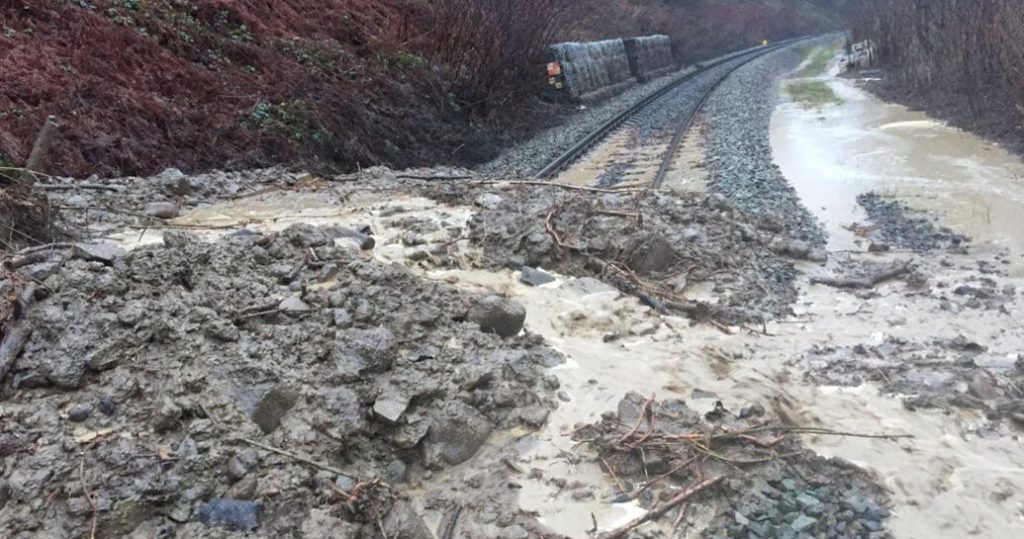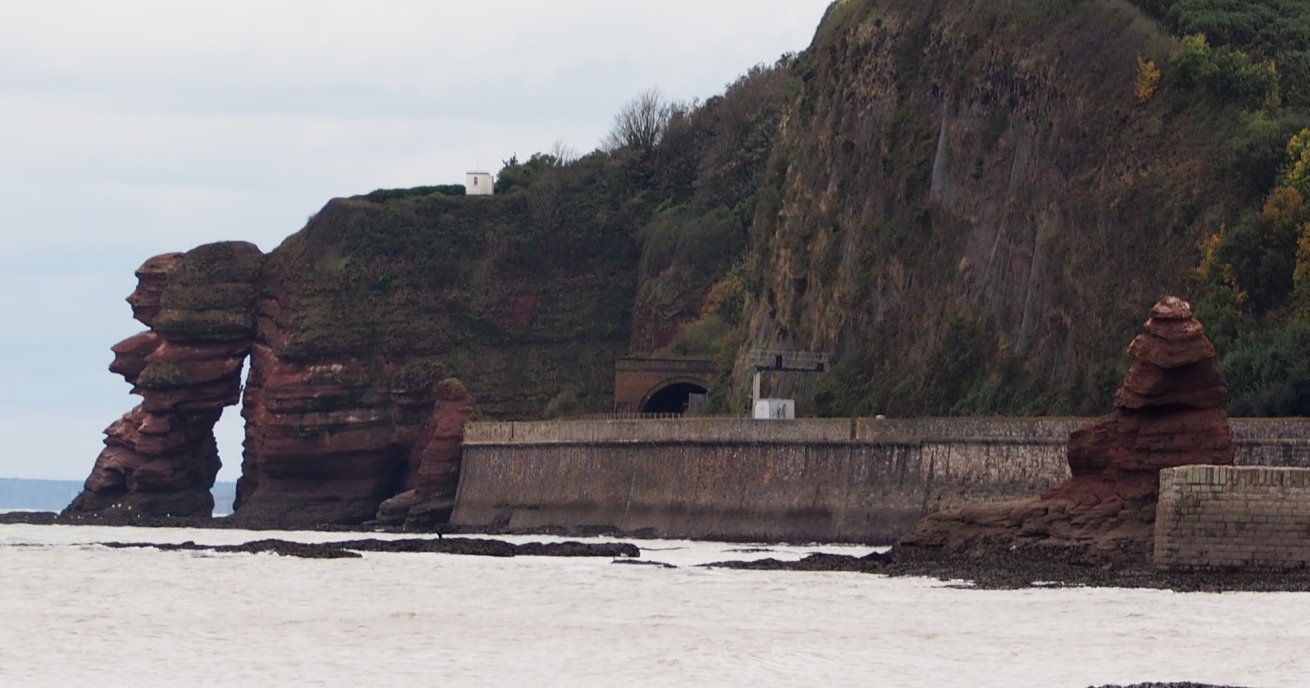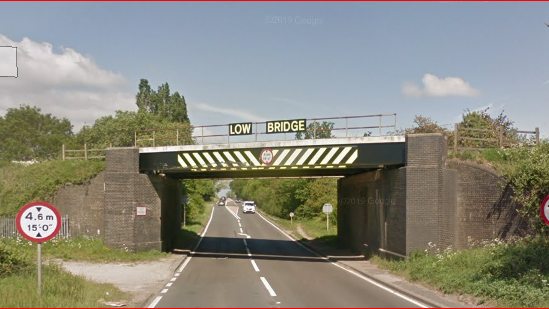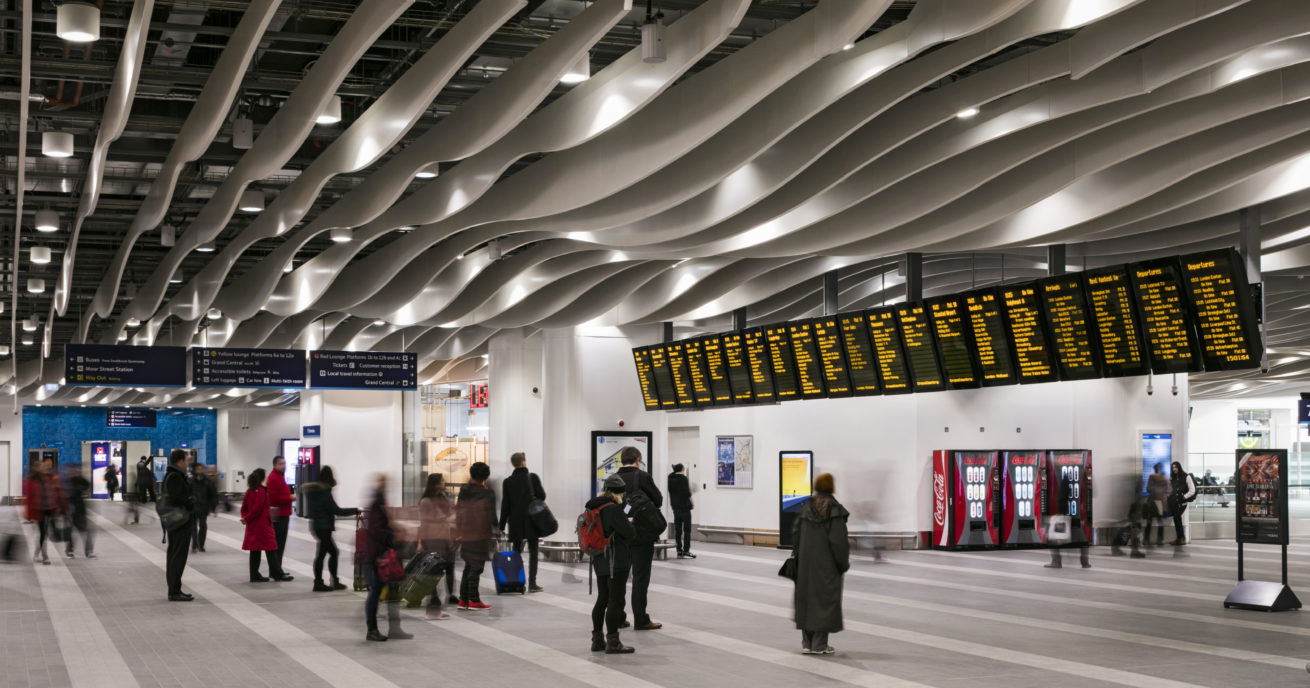Extreme weather increases the risks that people and property are typically exposed to.
Recent strong winds and high tides in Dawlish, Devon, underscore the importance of railway resilience.
In fact, we’re preparing vital repair work in Dawlish to safeguard the stretch of railway that connects the south west with the rest of the country.
Protecting the Devon coastline
This month (November 2018) we’re improving protection for the Dawlish sea wall and the railway running along the coast. Our team will repair four breakwaters – barriers built out to sea to protect the coast from the force of waves – by expert engineering teams from Network Rail and BAM Nuttall with the vital work set to take six months.
Extreme weather in Dawlish
Protecting the route through Dawlish is a national priority. We will make these immediate short-term improvements to the resilience of the railway while we continue with £15m detailed development of longer term options.
Such is the scale and importance of the challenge that Network Rail has now established a dedicated South West Rail Resilience Programme to identify and implement the best options to improve rail resilience of this iconic stretch of railway.
The South West Rail Resilience Programme will determine what is happening to the cliffs and coastline so we can explore alternative solutions. These will help to secure the long-term future of this part of the railway, which serves communities and businesses in South Devon and Cornwall, and connects the region to the rest of Britain.
Earthworks and asset management
We manage a portfolio of more than 190,000 earthworks assets, including slopes, embankments and cuttings – excavations in the ground composed of rock or soil.
Our specialist geotechnical engineers work across Britain to stabilise and repair weakened assets, enabling a network more resilient to future risk events, such as extreme weather.
Landslips

Landslips are hazardous to the track and surrounding environment. Heavy rainfall saturates the earth. This reduces the interlocking of particles, compromising soil strength, which causes landslips.
Heavy rain and strong winds experienced across parts of the country this autumn (September 2018) have caused major travel disruption and damage, and as seen in the aftermath of Storm Bronagh in Wales, resulted in a landslip on the line between Ystrad Rhondda and Porth.
Following an emergency like this, we deploy our engineers to carry out any immediate works to the affected areas; some of our previous weather-related emergency repair works includes stabilising hillsides and repairing cutting slopes.
Infrastructure fit for the future
Our earthwork portfolio is as old as the railway itself – most of our infrastructure slopes are more than 150 years old. Therefore, future-proofing our infrastructure is crucial – we aspire to and are actively working towards creating a safer, reliable and sustainable infrastructure that continually improves.
As the winter months approach, the vulnerability of our existing infrastructure will once again be tested and emergency renewal activity will be inevitable. However, by examining geotechnical data and the results of monitoring instruments, our teams will be able to determine the appropriate interventions needed to help minimise risk, damage and disruption.
We use technology and industry standard techniques, such as ground inclinometers, to measure earth movement. We also improve stability by securing loose soil with concrete piles, soil nails and retaining walls.
We also consider the impact of climate change on weather conditions in renewals and enhancements to ensure the railway can handle the projected increases in the severity and frequency of extreme weather in the future.




